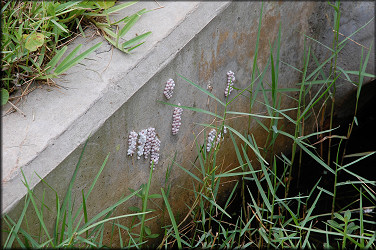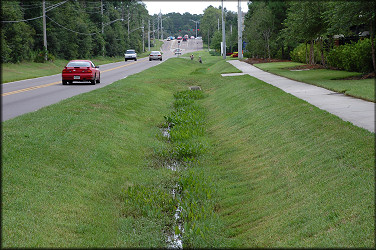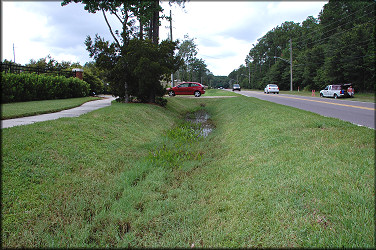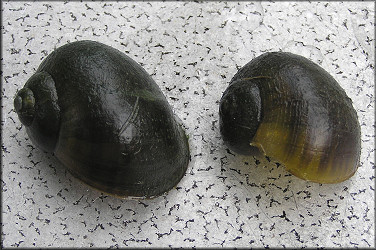|
Touchton Road East Swale, Southeastern Duval County Florida |
|
|
In 2010 this habitat was filled during road widening and the Pomacea population was destroyed. |
|
|
As part of an on-going project to formally document the presence of Pomacea paludosa (Say, 1829) [Florida Applesnail] in northeast Florida, on August 1, 2007 a visit was made to a swale along Touchton Road East between Southside Boulevard and Belfort Road. The presence of the snails was discovered by accident as I drove east on Touchton Road and spotted fresh Pomacea egg clutches on a concrete culvert. Closer examination of the swale revealed numerous egg clutches on swale vegetation, live Pomacea, and the fact that the snails had colonized the swale for a distance of about 400 yards. Although a limited amount of water was present in the swale during the visit as a result of recent precipitation, during the drier parts of the year little if any water would be present. How the Pomacea came to be in this modest habitat in the first place is a mystery as there are no other natural water bodies nearby. However, judging by the large number of egg clutches present, the snail population is quite large and is successfully propogating. A follow-up visit was made to the area on August 4th and a more extensive survey was conducted. This visit revealed that the Pomacea had in fact colonized some 800 yards of the swale - even those areas where no standing water was present. Additionally, the entire swale had been "manicured" with string trimmers which resulted in the destruction of most of the hundreds of Pomacea egg clutches that had been deposited on swale vegetation and observed two days earlier. |
|
|
|
|
|
Pomacea egg clutches on concrete culvert |
Touchton Rd. swale looking east toward Southside Blvd. |
|
|
|
|
Touchton Rd. swale looking west toward Belfort Rd. |
Two Pomacea from the swale |



